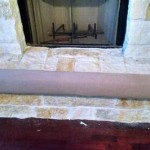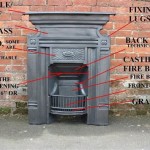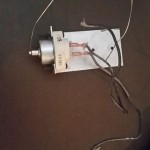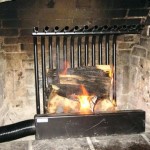Understanding Radiant Gas Fireplaces: Efficiency, Aesthetics, and Functionality
Radiant gas fireplaces represent a popular heating solution for homes, offering a blend of aesthetic appeal and efficient warmth. These fireplaces utilize radiant heat to directly warm objects and individuals within a space, differing significantly from traditional convection fireplaces that primarily heat the air. This article will explore the core aspects of radiant gas fireplaces, examining their functionality, benefits, design considerations, and operational requirements.
How Radiant Gas Fireplaces Work
The fundamental principle behind radiant gas fireplaces is the emission of infrared radiation. When natural gas or propane is combusted within the fireplace, it heats a ceramic or metallic component. This component then radiates energy in the form of infrared waves, which travel through the air and are absorbed by solid objects. This direct transfer of heat is markedly different from convection heating, where air is heated and then circulated throughout the room.
The key component of a radiant gas fireplace responsible for heat emission is often a ceramic plaque or a metal panel. These materials are specifically chosen for their ability to withstand high temperatures and efficiently radiate infrared energy. The design and surface area of these radiant elements are crucial factors in determining the fireplace's overall heating capacity and distribution pattern.
A vital element in the operation of a gas fireplace is the gas valve. This valve regulates the flow of gas to the burner and is controlled either manually or by a thermostat. Thermostat-controlled models allow for precise temperature regulation, enhancing energy efficiency and user comfort. Safety features are also integrated into the gas valve system, including flame sensors that shut off the gas supply if the pilot light is extinguished.
Ventilation is a critical consideration for all gas fireplaces, including radiant models. Direct-vent fireplaces draw combustion air from outside the home and exhaust combustion byproducts directly outside as well. This sealed system minimizes the risk of carbon monoxide poisoning and does not diminish the air quality within the dwelling. Vent-free models, on the other hand, draw air from the room and release combustion byproducts back into the room; however, these systems require stringent safety certifications and are subject to local building codes.
Benefits of Radiant Heat
Radiant heat offers several advantages over traditional convection heating systems. One of the primary benefits is its efficiency. Because radiant heat directly warms objects and individuals, it eliminates the need to heat the entire volume of air in a room. This can result in significant energy savings, especially in rooms with high ceilings or poor insulation.
Another advantage of radiant heat is its ability to provide consistent and even warmth. Unlike convection systems that create temperature gradients with warmer air near the ceiling and cooler air near the floor, radiant heat produces a more uniform temperature distribution. This enhanced comfort is particularly noticeable in large rooms that are difficult to heat evenly with conventional methods.
Radiant gas fireplaces are also known for their quiet operation. Unlike forced-air systems that generate noise from fans and ductwork, radiant fireplaces operate silently. This makes them an ideal choice for bedrooms, living rooms, and other areas where quiet ambiance is desired.
From an aesthetic perspective, radiant gas fireplaces offer a wide range of design options. They can be incorporated into various architectural styles, from traditional to contemporary. The visible flames and glowing embers create a visually appealing focal point, enhancing the ambiance of the room. Options include realistic looking logs, contemporary glass media, and various firebox finishes to customize the look.
Furthermore, radiant gas fireplaces require minimal maintenance compared to traditional wood-burning fireplaces. There is no need to chop or store firewood, clean up ashes, or worry about creosote buildup in the chimney. Regular professional inspections are recommended to ensure the gas system is functioning safely and efficiently, but routine cleaning is generally limited to dusting the fireplace surround.
Design and Installation Considerations
Selecting the appropriate radiant gas fireplace requires careful consideration of several factors. The size of the room to be heated is a primary determinant of the fireplace's BTU (British Thermal Unit) rating. A higher BTU rating indicates a greater heating capacity. It is important to choose a fireplace with a BTU rating that is appropriate for the room size to avoid overheating or underheating.
The venting configuration is another critical consideration. Direct-vent fireplaces are generally preferred due to their improved safety and efficiency. However, the installation of a direct-vent system may require modifications to the building's exterior, such as creating an opening for the vent pipe. Vent-free fireplaces offer greater installation flexibility, but they are subject to stricter regulations and may not be permitted in all jurisdictions. Adherence to local building codes is paramount.
The style and design of the fireplace should complement the overall aesthetic of the room. A wide range of options is available, from traditional fireplaces with realistic log sets to contemporary models with sleek lines and minimalist designs. The choice of materials for the fireplace surround, such as stone, brick, or metal, can also have a significant impact on the overall appearance.
Professional installation is essential for ensuring the safe and efficient operation of a radiant gas fireplace. Qualified technicians are trained to properly connect the gas line, install the venting system, and test the fireplace for leaks and other potential problems. DIY installation is strongly discouraged due to the inherent risks associated with working with natural gas or propane. Improper installation can lead to gas leaks, carbon monoxide poisoning, and other serious hazards.
The location of the fireplace within the room should also be carefully considered. Positioning the fireplace in a central location will maximize its heating effectiveness. Avoid placing the fireplace near flammable materials, such as curtains or furniture. Adequate clearance should be maintained around the fireplace to prevent overheating and potential fire hazards.
Operational Requirements and Safety
The safe operation of a radiant gas fireplace requires adherence to certain guidelines and precautions. Regular inspections by a qualified technician are recommended to ensure the gas system is functioning properly. These inspections should include checking for gas leaks, inspecting the venting system, and verifying the proper operation of the safety features.
Carbon monoxide detectors are essential safety devices for any home with a gas-burning appliance, including radiant gas fireplaces. Carbon monoxide is a colorless, odorless gas that can be deadly. Carbon monoxide detectors should be installed in accordance with the manufacturer's instructions and tested regularly to ensure they are functioning properly. Replace batteries in carbon monoxide detectors at least once a year, or as recommended by the manufacturer.
Proper ventilation is crucial for preventing the buildup of carbon monoxide and other combustion byproducts. Ensure that the venting system is clear of obstructions and that the fireplace is properly ventilated. Never block or cover the vents of a gas fireplace. If using a vent-free model, ensure that the room is adequately ventilated by opening a window or door.
Never use flammable liquids to start or accelerate the combustion process in a gas fireplace. This can create a dangerous explosion hazard. Use only the designated ignition system provided by the manufacturer. Keep flammable materials, such as curtains, furniture, and paper, away from the fireplace to prevent fire hazards.
Educate all members of the household on the safe operation of the fireplace and the importance of carbon monoxide safety. Ensure that everyone knows how to turn off the gas supply in the event of an emergency. If you suspect a gas leak, immediately evacuate the premises and contact the gas company or a qualified technician.
Follow the manufacturer's instructions for the proper use and maintenance of the fireplace. This includes cleaning the fireplace regularly, inspecting the burner and pilot light, and replacing worn or damaged parts. Neglecting maintenance can lead to reduced efficiency, increased safety risks, and premature failure of the fireplace.
In conclusion, radiant gas fireplaces offer an efficient and aesthetically pleasing way to heat homes. By understanding their functionality, benefits, design considerations, operation, and safety requirements, homeowners can make informed decisions about selecting, installing, and maintaining these appliances safely and effectively.

Flavel Strata Radiant Outset Gas Fire Stanningley Firesides

Valor Robinson Willey Firegem Visa Deluxe Radiant Gas Fire First Choice Places

Radiant Plus Fireplace Inserts Made In Usa Lopi Stoves

Lopi Radiant Plus Medium Gas Fireplace Insert Fireside Hearth And Leisure

Understanding Radiant Heat Valor Gas Fireplaces

Radiant Plus Large Gas Fireplace Insert Eau Claire Hearth

Radiant Plus Fireplace Inserts Made In Usa Lopi Stoves

Superior 36 Inch B Vent Radiant Gas Fireplace Brt4336 North Country Fire

Which Gas Fires Are The Most Efficient Direct Fireplaces

Lopi Radiant Plus Medium Gas Fireplace Insert Fireside Hearth And Leisure
Related Posts








